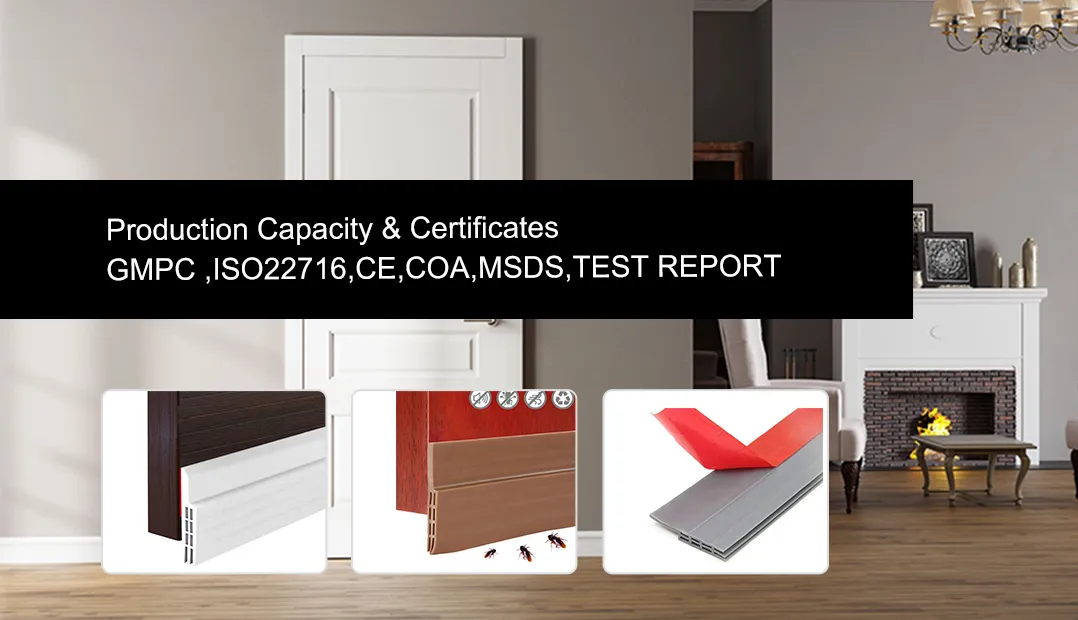Types of Exterior Door Bottom Weatherstripping - Your Ultimate Guide
Types of Exterior Door Bottom Weatherstripping
When it comes to maintaining a comfortable and energy-efficient home, one often overlooked component is the weatherstripping around exterior doors. Weatherstripping helps seal gaps between the door and its frame, preventing drafts, water intrusion, and energy loss. Among the various types of weatherstripping available, the bottom weatherstripping of an exterior door plays a crucial role in protecting your home from the elements. Here, we explore several common types of exterior door bottom weatherstripping, their materials, and their applications.
1. Sweep Strips
One of the most popular options for sealing the bottom of exterior doors is the sweep strip. These are typically made of rubber, vinyl, or bristle materials and are attached to the bottom edge of the door. Sweep strips function by creating a barrier when the door is closed, effectively preventing drafts and moisture from entering your home. They are particularly effective against rain, snow, and dirt, making them an excellent choice for exterior doors exposed to harsh weather conditions.
2. Door Bottoms with Built-in Seals
Another effective solution is the door bottom with built-in seals. These products often come with a vinyl or rubber gasket integrated into the door bottom itself. When the door closes, the gasket compresses against the floor surface, creating a tight seal. This type of weatherstripping is advantageous because it simplifies installation and maximizes effectiveness, as there is no gap between the door bottom and the floor.
3. Thresholds
exterior door bottom weatherstripping types

While not technically a type of weatherstripping, thresholds play an essential role in the sealing process. A threshold is the flat piece of material installed at the bottom of a door frame. Many modern thresholds come equipped with adjustable weatherseals that can be raised or lowered to ensure a snug fit against the door. This feature allows homeowners to customize the seal based on seasonal changes, making it an adaptable solution for various climates.
4. Bristle Strips
Bristle strips are a less common but effective weatherstripping option. These strips are made of flexible bristles that create a barrier against drafts and dust. They are particularly useful for uneven surfaces or at the bottom of doors leading to garages and basements. The bristles compress when the door closes, allowing for a tight fit that prevents air leakage while still permitting easy motion when opening and closing the door.
5. Foam Tape Weatherstripping
Foam tape is a versatile and easy-to-install option for sealing the bottom of doors. Available in various thicknesses and densities, foam tape is typically made of closed-cell foam that provides excellent insulation. This type of weatherstripping can be cut to size and applied directly to the door or the threshold. While it may not be as durable as other options, foam tape offers a quick and cost-effective solution for reducing drafts.
Conclusion
Choosing the right type of bottom weatherstripping for your exterior door is essential for ensuring comfort and energy efficiency in your home. Each type of weatherstripping has its unique benefits and applications, so consider your specific needs and environmental conditions when making a selection. Proper installation and maintenance of these weatherstripping solutions can lead to significant energy savings and a more comfortable living environment.
-
Silicone Seal Strip: The Ultimate Solution for Your Sealing NeedNewsNov.01,2024
-
Keep the Heat: The Importance of Seal for Oven DoorsNewsNov.01,2024
-
Essential Guide to Corner Protectors for Your FurnitureNewsNov.01,2024
-
Enhance Your Home with Silicone SolutionsNewsNov.01,2024
-
Efficient Maintenance of Melamine Sealing StripsNewsNov.01,2024
-
Comparison of Different Edge Sealing ProcessesNewsNov.01,2024
-
Types of Door Bottom Seal Strips and Their Best UsesNewsOct.25,2024